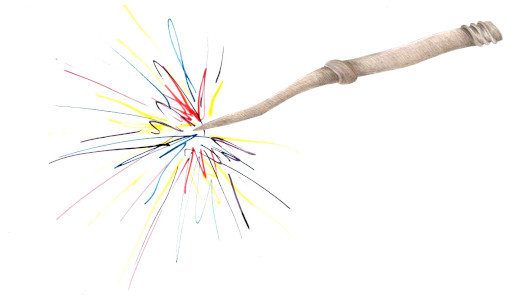Developing post-performance activities
“Nobody is going to create a world that we all really want to live in if there is no pleasure in doing it. I’ve really come to believe that our emotions tell us where we fit in the world at any given moment. If you’re miserable doing something, something is wrong, something needs to be corrected. So, I’d say play together and pay attention to what pleasures arise through this kind of purposeful play, because how everyone feels will be an important clue about what a mutually meaningful world might look like.”
— Catherine Graham, TSDC research team lead and artistic director, School of the Arts.
As theatre-based practitioners and researchers we believe that creating a mutually meaningful world is a creative, collective, and durational undertaking. So, when designing post-performance activities, we ask ourselves two questions:
- How can we use acts of purposeful play to extend the moment during which audiences are emotionally moved beyond the performance event itself?
- What activities might best invite audiences into a durational project of co-imagining a better Hamilton?
The post-performance activities team starts thinking about suitable post-performance activities at a point when a clear overarching theme has emerged (though the play itself is still being developed). This gives the team time to devise activities that have a thematic connection to the story of play. Some of these activities are versions of exercises used in the workshops. Using activities that are familiar to performer-advocates provides them with an opportunity to recognize (and be recognized by audience members for) the degree of agency they’ve developed with the activities. It also opens up the possibility of participants taking a leadership role in introducing or demonstrating the activity.
Some activities have been used repeatedly in TSDC workshops and post-performance activities. For example, the fill-in-the-blank response prompt:
These are stories of people who…
in a City where…
These activities create a kind of ritualized through-line for the project and its goals. Other activities, like Image Theatre exercises, are adapted to address the specific world of the play. Yet others, like Storyboarding, are designed to extend the audiences’ imaginations beyond the immediate post-performance moment to consider ways of creatively engaging the themes of the play after they leave the performance.
In addition to paying attention to the play’s themes, activities are always designed with a particular performance or audience in mind which is why it’s crucial to include community partners in this discussion. For example, when we were planning post-performance activities for the presentation of When My Home is Your Business at the Canadian Alliance to End Homelessness national conference, our Good Shepherd community partner Katherine Kalinowski suggested that we design the activities to provide the audience with some insight into the theatre-creation process (since most people attending the conference were already well-versed in the issues related to precarious housing and homelessness). Based on these conversations, after the performance we decided to facilitate a short Image Theatre exercise where we invited the audience to join with performer-advocates in creating two images.
Post-performance activities that are deliberately designed to extend engagement beyond the performance event itself can also take the form of a social media action, a prompt that is linked to a symbolic object, or a creative exercise that can be taken home and shared with others. In addition to often being actors in the particular sector that the play’s content addresses (housing, anti-poverty, youth services), audience members are invited with these activities to see their roles extending to their own neighbourhoods and communities.
Post-performance activities:
- Provide performer-advocates with an opportunity to hear audience reflections and to creatively engage with audience members.
- Introduce creative modes of dialogue.
- Encourage audiences to see themselves as part of an ensemble of actors on the stage of a shared public environment and as co-creators of collective story about how to make that environment a more inviting place for everyone.
- Focus attention on how participation in creative acts of reflection might enhance existing practices and expand our collective capacity to co-imagine a better City, a better future.
Things to keep in mind:
- Location of the performance (classroom, conference, community centre, public library)
- Who is in the audience?
- Activity’s thematic connection to the content of the play
- Time (Resist the urge to include all the amazing ideas the post-performance activities team came up with!)


